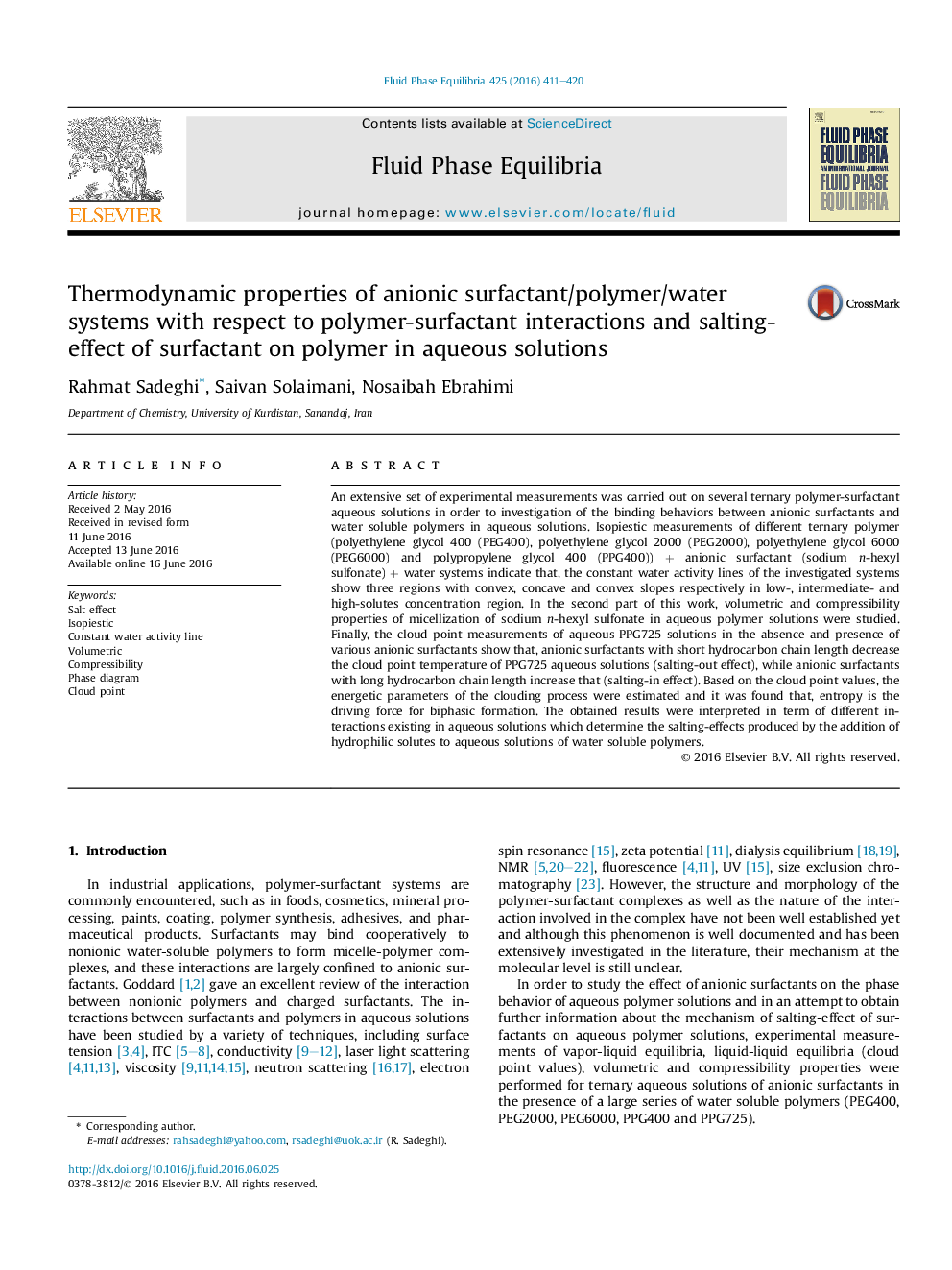| کد مقاله | کد نشریه | سال انتشار | مقاله انگلیسی | نسخه تمام متن |
|---|---|---|---|---|
| 201127 | 460533 | 2016 | 10 صفحه PDF | دانلود رایگان |
• Salt effects of anionic surfactants on water soluble polymers in aqueous solutions.
• Constant water activity lines of polymer + surfactant aqueous systems show three regions.
• Surfactants with short hydrocarbon chain length have salting-out effects on PPG725.
• Surfactants with long hydrocarbon chain length have salting-in effects on PPG725.
• Entropy is the driving force for polymer-surfactant aqueous biphasic formation.
An extensive set of experimental measurements was carried out on several ternary polymer-surfactant aqueous solutions in order to investigation of the binding behaviors between anionic surfactants and water soluble polymers in aqueous solutions. Isopiestic measurements of different ternary polymer (polyethylene glycol 400 (PEG400), polyethylene glycol 2000 (PEG2000), polyethylene glycol 6000 (PEG6000) and polypropylene glycol 400 (PPG400)) + anionic surfactant (sodium n-hexyl sulfonate) + water systems indicate that, the constant water activity lines of the investigated systems show three regions with convex, concave and convex slopes respectively in low-, intermediate- and high-solutes concentration region. In the second part of this work, volumetric and compressibility properties of micellization of sodium n-hexyl sulfonate in aqueous polymer solutions were studied. Finally, the cloud point measurements of aqueous PPG725 solutions in the absence and presence of various anionic surfactants show that, anionic surfactants with short hydrocarbon chain length decrease the cloud point temperature of PPG725 aqueous solutions (salting-out effect), while anionic surfactants with long hydrocarbon chain length increase that (salting-in effect). Based on the cloud point values, the energetic parameters of the clouding process were estimated and it was found that, entropy is the driving force for biphasic formation. The obtained results were interpreted in term of different interactions existing in aqueous solutions which determine the salting-effects produced by the addition of hydrophilic solutes to aqueous solutions of water soluble polymers.
Figure optionsDownload as PowerPoint slide
Journal: Fluid Phase Equilibria - Volume 425, 15 October 2016, Pages 411–420
